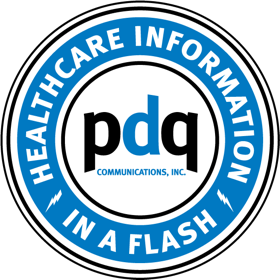The ability to successfully market pharmaceutical products to healthcare providers depends on a...
Marketing pharmaceutical brands is very challenging. They are highly regulated and complex, and marketing them effectively demands in-depth knowledge of your audience, what they’re looking for, and the best ways to reach them.
With stiff competition in this market, and physicians increasingly more difficult to connect with, successfully reaching and engaging the optimal recipients is both more difficult, and more essential than ever before.
Which begs the question: Just how effective are pharmaceutical marketing campaigns, and how do you measure their success?
Is Pharmaceutical Marketing Effective?
When implemented correctly, the short answer is: yes.
There are countless marketing campaigns and strategies targeting healthcare professionals (HCPs), but the most successful have a highly targeted and segmented audience; produce useful, informative and specific content; and utilize a multi-channel approach.
In 2020, according to consumer data firm Statista, the U.S. pharmaceutical industry spent over $6.5 billion on direct-to-patient marketing. However, the lionshare of pharma’s marketing dollar is focused on physicians and other targeted HCPs. In fact, the pharma industry increased how much it spends on marketing by nearly 70 percent throughout the past 20 years, currently totaling nearly $30 billion, with more than $20 billion of that used for marketing directly to HCPs, according to a 2019 report by international, peer-reviewed medical journal JAMA Network.
While on its face the pharmaceutical marketing environment has changed significantly in the last few years—with many in-person interactions replaced by digital platforms, and a direct mail resurgence—the key tenets of pharmaceutical marketing remain as effective as ever at converting customers. This entails connecting with physicians and consumers by providing highly targeted, useful information and valuable resources relevant to a specific audience.
How to Measure the Success of Your Pharma Marketing Campaign
When marketing to HCPs, tracking the progress of your campaign is critical to guaranteeing its success. Regularly examine your marketing techniques to learn what’s working for you and what needs to change.
When gauging marketing strategy success, return on investment (ROI) is likely the most useful metric.
ROI calculates the sales revenue generated by every dollar spent with the goal being a “return” that is multiple times larger than the “investment.” Historically, when implemented correctly, pharma email and direct mail marketing generates positive ROI, often defined by significant growth in prescription activity among targeted HCPs.
How to Ensure the Best ROI
The best way to achieve a good return on investment is by focusing on three things: audience, content, and strategy.
Every bit of content you produce should be designed to attract, inform, or delight your audience, while providing value they can’t attain anywhere else. With a highly targeted and segmented audience, you can more easily produce content relevant to their specific needs, increasing the chances of engagement.
A well-segmented audience also helps your content strategy, since a message that works for one prospect will not necessarily work for another. Whether dealing with HCPs or consumers, you need to break down into as much detail as possible who you’re trying to reach, and what their needs are.
Investing in your digital strategy is pivotal to staying in the game. Digital marketing makes all the difference in a B2B strategy, with 72 percent of B2B buyers in the healthcare space beginning with online searches, according to Toronto-based B2B digital marketing agency Jumpfactor.
This means you capture a lot of prospects simply by maintaining a robust online presence and effectively leveraging email marketing and social media. Digital marketing provides huge advantages in customer segmentation and targeting, and is also considerably less expensive than many traditional channels.
Direct Mail vs. Email Marketing
Email marketing is not only one of the most effective tools available in your healthcare marketing toolkit, it’s also one of the best ways to leverage personalized content. Depending on the scale of your marketing efforts, you can conduct one-to-one emailing or broader campaigns, and utilize emails for all stages of the buyer’s journey.
Despite the proliferation of email marketing in the HCP environment throughout the last several years, direct mail marketing has remained remarkably relevant. In fact, according to the Data & Marketing Association, 42.2 percent of direct mail recipients either read or scan their physical mail, with only 22.8 percent reporting they don’t read it at all.
Direct mailers also have a higher ROI than paid advertisements, according to marketing thought leader Neil Patel. So not only can you target specific prospects, but your message will be more effective.
The best strategy is to utilize email in conjunction with direct mail to further segment your audiences, so you send the right message to the right people at the right time.
How a Multi-channel Marketing Approach Can Help Your Overall Campaign
Whether through direct mail, email, online advertising, or in-person sales rep activities, adopting a multi-channel approach of marketing is crucial. Since there is no one-size-fits-all method to pharmaceutical marketing, it’s important to implement a multi-level method to be able to reach your audience most effectively.
Different people consume content in different ways, and using multiple communication channels provides the flexibility to deliver your content in the platform that best suits your audience’s needs.
Utilizing a targeted data-driven multi-channel strategy also enables you to measure the ROI of your marketing resources—providing a complete overview of what, when, and how your content is being accessed.








